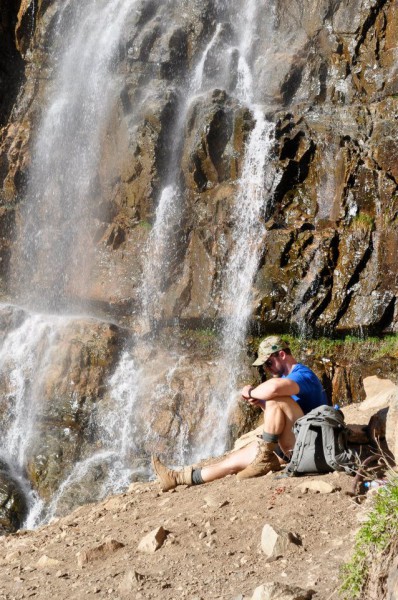 PR Friday is a celebration of training. Get active in the 70’s Big community and talk about your training. If you aren’t “as strong as everyone else”, it doesn’t matter. We all started somewhere. Post training updates or the week’s PRs to the comments.
PR Friday is a celebration of training. Get active in the 70’s Big community and talk about your training. If you aren’t “as strong as everyone else”, it doesn’t matter. We all started somewhere. Post training updates or the week’s PRs to the comments.
The Weekly Challenge was directed at women and was a photo contest. I neglected to post about it on social media, and therefore there were zero entries (despite one gal putting a submission for the manly contest!). Nevertheless, this will make me rethink gender fairness for contests in the future.
Next Week’s Challenge: Cook at least one meat-based meal in the crock pot. Post the recipe to next week’s PR Friday comments.
Week In Review: Monday started with a female post about muscular imbalances. It’s relevant to guys, but it’s common for females to have muscular limitations in their training. On Tuesday I provided a progression and programming parameters for someone who wants to train for a GoRuck Challenge, though most of the advice applies to backpackers and hikers too. On Wednesday I posted a video that shows and corrects the three common mechanical faults with the press. I’ve also started consultations back up and have talked to some very cool people, including a Scot and Australian in the same day (I wish I had a cool accent).
Q&A
Chad H. asks:Hey Justin, couple of questions for the Q&A:1. Is there any marker to determine when would be a good time to switch to the TM Split? Just when you feel like it?2. Think it’s possible to push up both the Press and Bench every week? I know you give a couple of scenarios in the TM Advanced but I’m talking Bench and Press Volumes and Intensities on the same day.
3. I’ve been hearing a lot lately about doing a single heavier than your workset weight as part of the warmup so as to make the workset feel lighter. Any thoughts (specifically doing these on Volume and Intensity days)?Thanks
Dear Chad,
1. Typically when things slow down in a linear progression. Should the linear progression be run until it’s a life destroying affair that renders the lifter useless for a week or so after their final workout? Probably not. As you know, I did that, and I don’t recommend that people do it anymore. However, if there have been several resets, and the lifter gets to the same weight every reset, then yeah, they are probably due for a programming transition (assuming there aren’t extraneous factors like technique or recovery that are causing this).
2. Hmm. I think it would be possible for an early stage intermediate. I’m not a fan of the “alternate the weekly emphasis from press to bench” in stock TM programs. Chad is referring to how in The Texas Method: Advanced I provide many template examples of how to do both in the same week, though usually one day is “press day” while the other is “bench day”. But if someone were going to do try and get volume and intensity work with both exercises, they would probably need to only use a 3×5 for the Volume Day, and doubles or triples on the Intensity Day. Press may need to come first (since it’s less invasive than benching), but that would depend on what the trainee considers more important (perhaps their order could be alternated every week?). The second movement on the Intensity Day could be several sets of doubles instead of triples to avoid inducing any more fatigue on the muscles that would be there from the preceding exercise. Perhaps both lifts could just use doubles so that the total number of reps are lower for better Intensity progress? It’s interesting, and I’ve never done it, but I kind of like it for early stage intermediate and TM users. Or at least I like it better than the stock recommendation of alternating the lifts every week.
3. Doing a single before the work set would provide a neurological effect of making the work set feel lighter, but I would not recommend this. There is still a physiological effect of getting a rep at a higher intensity. If I had Chris, Mike, or AC do this, then they would have less in the tank for their scheduled session, and it may even throw off the weekly stress. By getting a higher intensity rep on the Volume Day, it’s applying a different adaptive stress than what I’m going for. I see this being problematic for them.
Now, if we’re talking about people who are focusing their training on lower intensity with more volume or reps, then it may not matter. Yet, someone in this position would be a) lesser advanced or b) training just to maintain strength or muscularity within the context of their goals. If someone were regularly working to lift heavy weights every week (as in a Texas Method), I don’t see this being helpful and potentially being harmful. There’s a reason volume and intensity are fluctuated for raw, un-drugged lifters.
Besides, the warm-ups are supposed to appropriately neurologically prep the lifter. I would assume that some proponents of this method may not warm-up properly. Some of them probably warm-up fine enough, yet their program may not be finely tuned where a higher intensity single will disrupt progress.
Michael L.Hey Justin, I had to workout with suboptimal weights for my latest intensity day. Weighed all the plates on a scale, some of them were accurate with less than half a pound difference, but some of them were off. 45’s weighed 40 lbs, the 35’s weighed 30 etc.Anyway, I made up for the difference in weight, and I think because I had to use steel instead of the bumpers I’m used to it messed everything up. Squat and press were hard, but I got through them. Deadlift I only got 2 out of my 3 reps.27 Male 235 lbs
For reference, today I did the following:Squat: 375×5
Press: 182.5×5
Deadlift: 460×2 (wanted 3)Should I repeat the same deadlift next week when I’m back to the bumpers I’m used to? Switch to 2’s? Or move up? This is my 4th week on the Texas Method. Before this, I did 5-3-1 for 10 cycles, before that Smolov, before that Starting Strength, before that Crossfit. I have both eBooks so if there is a section you can point me to that works as well.
Thanks!
Your volume is at 84% of your Intensity Day and you’re only in week 4. Typically the “cap at 85%” applies to 3×5 as opposed to 5×5. This means that the volume is higher than it probably should be at this point.
I think that you started with weights that were too heavy on both the Volume and Intensity Days, especially since you are coming from 10 cycles of 5/3/1. Given that all of your plates were dicked up, you need to account for that in the progression (especially if bar weight is 5, 10, or 15 pounds different). If you are returning to a non-crappy gym with better equipment, then do what you can until then. Otherwise, do not increase your Volume Day and try and let the Intensity Day increase. Since your ID is hard already (as a result of you picking weights that are too heavy), it may take a weeks to normalize. If you think that the Intensity Days should not be hard, then you are probably doing too much volume (since you are doing a 5×5 and just came from a lower volume program like 5/3/1, a 3×5 on Volume Day is probably more appropriate).
Lastly, if you have both books, then review the Intensity Day rep schemes. There are plenty of options you can transition to with clear instructions on how to use them. That means that you could probably use triples, or doubles, or another approach to allow you to hit get decent intensity work in.
What are your thoughts on this uncoordination regarding movement patterns? and how to address it (especially in a group setting) without holding back other kids that pick up things faster?
Dear Brian45,
This is where the art of coaching a group comes in. CrossFit does a pretty good job of teaching their coaches to take the group through the progression of a movement together. This allows you to get some eyes on people during the progression. If someone has an issue, you can cue them simply enough. If it’s really bad, then you may or may not have the time to correct it, depending on the severity and length of time the correction would take. In such a case, continue the group’s progression, and you can focus a bit more on that person once the individual portion starts (if there is such a portion).
The effectiveness of this process is dependent on the quality of simple, concise progressions to achieve the goal of a given movement. Rippetoe’s teaching method of the power clean differs from USAW’s power clean progression, but it’s incredibly simple (I taught a 65 year old cyclist to power clean in about three minutes in Rip’s gym). This particular power clean is good for general strength and conditioning, but may not be the best for Olympic weightlifting. On the weightlifting side, Pendlay’s progressions for snatch and clean are very simple and concise as well, yet they put different emphasis on the movement. In other words, the Rippetoe power clean puts an emphasis on jumping whereas the Pendlay clean/snatch puts an emphasis on proper positioning for optimal weightlifting.
The above paragraph’s tangent provides two examples of good progressions that are simple, concise, and accomplish the intended goal. If you lack a progression, you’re not setting up the trainees for success. If the progression is poor, then you’re only going to make it difficult from a mental or physical standpoint.
Justin, I posted this question under another topic and I’m hoping you’ll give me your thoughts: Do you think that a male having a 5rm that is a higher percentage of their 1rm could be a symptom of low testosterone? When I was younger (25-29) I used to be able to use the (reps x work-weight x .0333)+work-weight = max for bench and come really close. Now that I’m older (37), I’m finding that I can’t bench what my reps at 225 would suggest under that formula. One other fact is that I used to test my max relatively regularly and stopped doing that for a very long time. So, my question is basically: Am I turning into a woman, or do I just need to start lifting more at higher percentages of my max? Have you ever seen this before?
Dear wayniac,
Short answer: yes, probably. As males age, their testosterone levels decrease. It’s part of life, and it does not mean you’re turning into a woman. Sure, there could be a variety of factors that are inhibiting your lifting ability, but you know that each five year aging period will result in decreased recovery capabilities. This isn’t just because of the number of years you’ve been alive, but the physiological effect of aging, and lower testosterone does occur.
I’m not going to pretend to know much about aging and hormonal supplementation, but I don’t think it’s a bad thing to consider for men getting into their 40s. Testosterone is what makes a man a man, and when it goes down, tons of health issues erupt. I’m not even referring to performance, but health, and nobody is going to look after you other than you. Just a thought.
If anyone has anything to add or information to provide, throw it in the comments.





